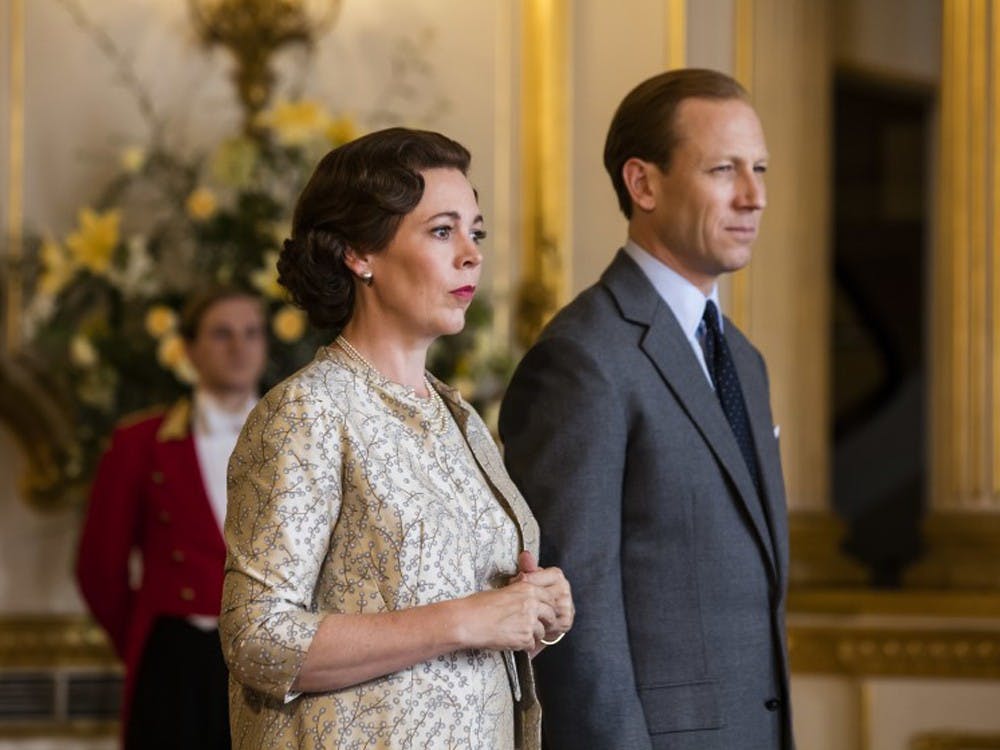I avoided watching Netflix’s latest season of “The Crown,” released Nov. 17 — not only so I could binge it over Thanksgiving break, but also because I was apprehensive about the major changes made to the cast of the Queen Elizabeth biopic series as it moved into a new era. I saw enough Twitter headlines either praising or denouncing the cast replacement to incite a wary hesitation, but I pushed through the influence of those reviews because I enjoyed the first two seasons so much.
After watching the first two of the third season’s 10 episodes, I felt a little bewildered and ultimately distracted by seeing Olivia Colman’s Queen Elizabeth in the same spaces as her acting predecessor, Claire Foy. I knew these big changes were coming, as Netflix announced with the second installment of the series that “The Crown” would be filmed in three groups of two seasons each, with the cast changing every two seasons to adjust with Elizabeth’s (and others’) inevitable aging.
Despite having this advanced knowledge, I initially found it harder to look past the actors themselves into the characters they were playing. Perhaps this stemmed from the current cast being relatively more well-known than the original actors, as Claire Foy and Matt Smith (Prince Philip, seasons one and two) were far less recognizable in the United States before “The Crown.” Helena Bonham-Carter (Princess Margaret, seasons three and four) and Olivia Colman (Queen Elizabeth, seasons three and four), in contrast, have more notoriety in America, thanks to the success of the “Harry Potter” franchise as well as the Amazon hit “Fleabag.” I certainly struggled trying not to think of “Outlander” villain Jonathan Randall every time Tobias Menzies (Prince Philip, seasons three and four) graced the screen.
The season’s third episode, “Aberfan,” breaks the previous two exposition episodes and portrays one of Elizabeth’s major experiences — in this case, a natural disaster that ignites the class tensions and economic strife that pervaded British society in the 1960s. Having such a strong narrative episode solidified the new actors in their familiar roles, and from that point on I had no problem with the change-up. In fact, the narrative temporal shift has made more room for other characters to come to the forefront. Perhaps most notably, Elizabeth’s two older children Charles (Josh O’Connor) and Anne (Erin Doherty) re-enter as young adults struggling to find their place in an age-old institution that is fighting to keep up with the constant flux of the 1960s and ‘70s.
Olivia Colman certainly does justice to Elizabeth’s immovable posture as head of the royal family, but the queen’s personal narrative is less gripping than previous seasons as she has settled into her role as monarch. I’m sure that this almost monotonous routine comes with the territory of having to remain a neutral, stoic figurehead despite the surrounding chaos, and Colman’s portrayal comes with many visceral visual displays of emotion. Elizabeth’s relegation to the background makes way for outstanding performances from Bonham-Carter as well as O’Connor. Prince Charles’s identity crisis as he struggles to conflate his personhood with the royal position he has been born into is particularly poignant, and it replaces the show’s youthful element that was once present in young Elizabeth and Philip’s romance.
Britain’s troubled history during the period depicted serves as an intriguing undercurrent to the family drama that creates a pervasive atmosphere of uncertainty and disorder. I knew less about this era going into the season, so I found myself pausing the show to browse the Internet much more frequently than in previous seasons. This shift in tone helps bridge the gap between seasons two and three, however, as the cast change is accompanied by a new political environment that is both familiar and foreign.
By the season’s final episode, it is clear that the latest installment of “The Crown” misses nothing that made the first two seasons so captivating. If anything, the show has matured with its central characters into a more grim and serious space, but the cast’s performances all around are nothing short of sublime. Compiled of more moving parts than its previous two seasons with its increased focus on Queen Elizabeth’s various family members, season three of “The Crown” demonstrates the ability to propel a story into a new age without losing any of its prestige.
Get The Chronicle straight to your inbox
Signup for our weekly newsletter. Cancel at any time.

